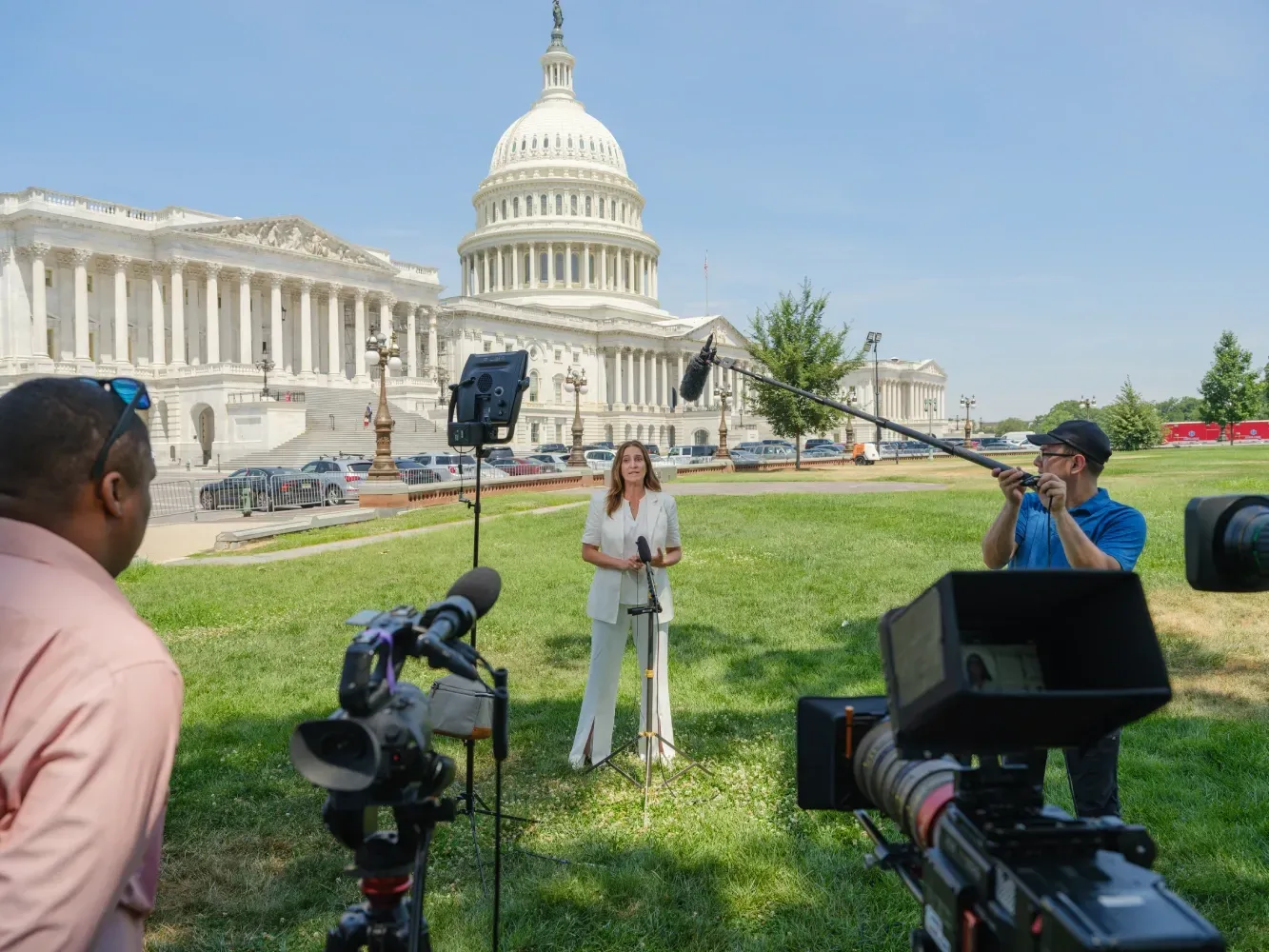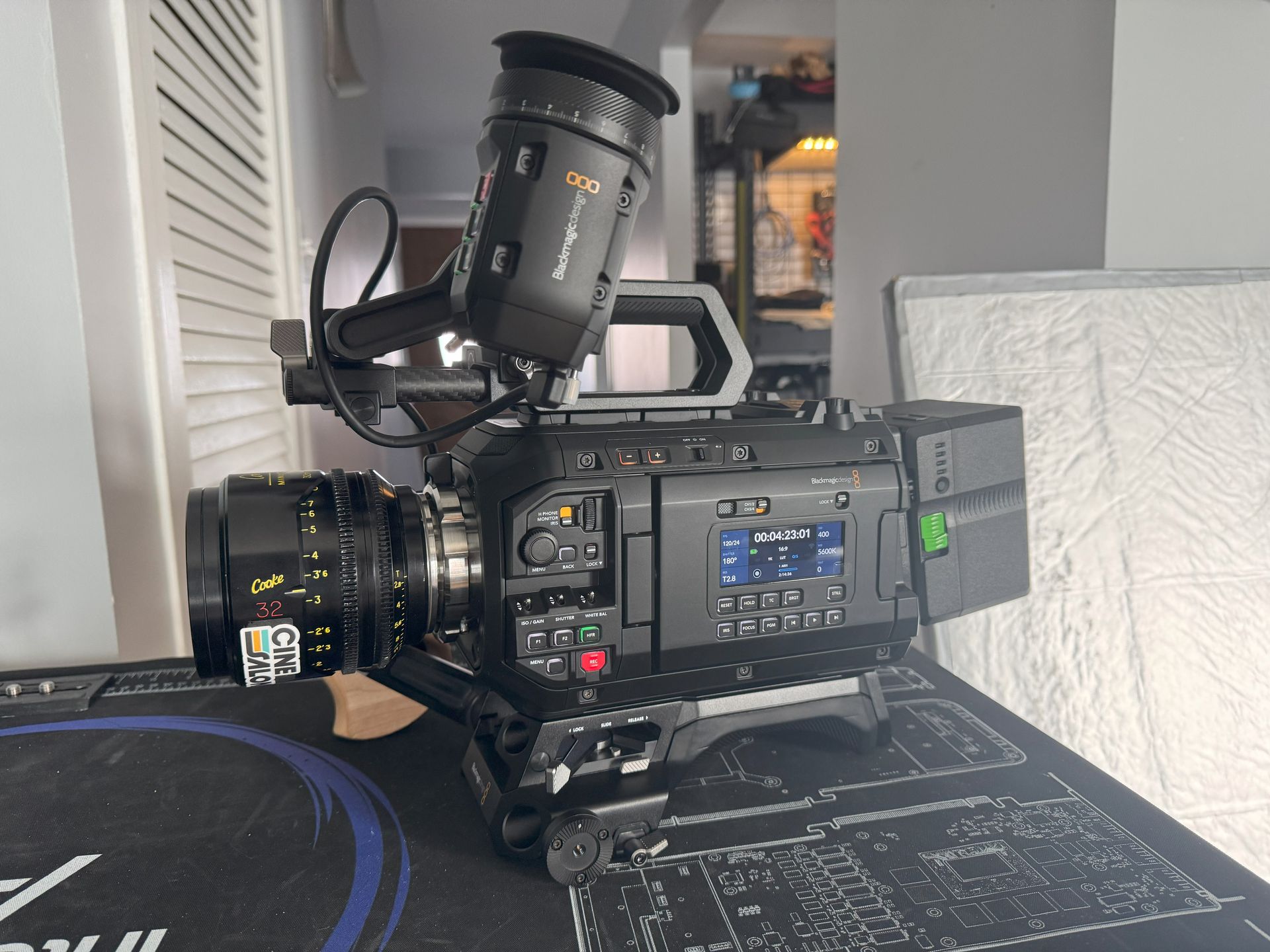
A video script is the heart of any video content. It's a written document that tells what happens in the video, scene by scene. It includes details like the dialogue, actions, and visuals. Think of it like a blueprint for a video. It guides the production team on what to do and say, ensuring the video content is clear and engaging.
Why is a Video Script Important?
A video script is crucial because it sets the plan for your video. With it, you can control the flow of information. You can make sure your message is delivered in the most effective way possible.
Without a script, your video might lack focus. It could be confusing or boring. A script helps keep everything in order. It gives your video a clear path from start to finish. That's why it's so vital.
Whether you're a beginner or an experienced content creator, these steps will help you craft compelling video scripts. It's not just about putting words on paper. It's about using those words to connect with your audience and convey your message effectively.
How to Write a Video Script
Follow the steps and guide below.
Understanding the Purpose of Your Video
Identifying Your Audience
First, you need to know who your audience is. Who will watch your video? Are they teenagers, adults, or senior citizens? Do they know about the topic? Understanding your audience helps you write a script that resonates with them.
Clarifying the Goal of the Video
Next, you need to clarify your video's goal. What do you want your audience to do or feel after watching it? Do you want to inform them? Persuade them? Entertain them? Defining the goal gives your script a clear direction.
Determining the Key Message
Lastly, determine the key message. You want your audience to remember this main idea or point. It could be a single sentence or a few key points. Make sure your message aligns with your audience and your goal.
Understanding the purpose of your video is a crucial first step in scriptwriting. It gives you a clear path to follow. It ensures your script will resonate with your audience and achieve your goal. So, before you start writing, take some time to think about your audience, your goal, and your message. Your script will be better for it.
Research and Preparation
Collecting Relevant Data
The first step in your preparation is to gather information. What do you need to know about your topic? The more data you have, the more solid your script will be. Use trusted sources and keep track of them. You might need to cite them in your video.
Studying Competitors' Videos
Next, take a look at similar videos. What do they do well? What could be better? This helps you understand what your audience likes and dislikes. You can use these insights to make your video even better.
Preparing the Initial Concept
With your research done, it's time to form an initial concept. This is a broad idea of what your video will look like. It could be a rough storyboard or a simple list of ideas. This concept will guide you as you write your script.
Doing your homework before you start writing is crucial. It gives you a solid foundation for your script. It helps you understand what your audience wants to see and hear. It also lets you prepare an initial concept for your video. With these three steps, you'll be ready to start writing a great script.
Creating the Video Outline
Brainstorming Main Ideas
Now that you have your research and concept, it's time to brainstorm. What are the main ideas you want to convey? Write them all down. Don't worry about order yet.
Arranging Ideas in Order
Once you have your main ideas, arrange them in a logical order. This forms the backbone of your video script. It guides the flow of your video, ensuring your audience can follow along easily.
Standard Structure of a Video Script
Your script should have three main parts: an introduction, a body, and a conclusion. The introduction hooks the audience and introduces the topic. The body delivers the main content. The conclusion wraps up the ideas and leaves a lasting impression.
Use of Storytelling
If possible, use storytelling in your script. Stories are powerful. They make your video more engaging and memorable. Remember to keep it relevant to your topic and audience.
Creating a video outline is like drawing a map. It guides you as you write your script. With a clear structure and engaging storytelling, you can craft a script that hooks your audience and effectively delivers your message. So take the time to brainstorm, arrange your ideas, and plan your story. Your script will be all the better for it.
Writing the Video Script
Clarity, Brevity, and Engagement
When writing your script, aim for clarity. Keep your sentences short. Avoid jargon unless it's necessary for your audience. Make your message clear and concise.
Also, remember to keep it engaging. Use a conversational tone. This makes your video more enjoyable to watch.
Incorporating Visual Descriptions
Next, add visual descriptions. These are notes about what the audience will see during each video part. This helps the production team bring your script to life.
Writing Voice-Over Scripts and On-Screen Text
A script has two main parts: the voice-over and the on-screen text. The voice-over is what the narrator or characters say. The on-screen text is what the audience reads on the screen. Both should support each other and work together to convey your message.
Using a Conversational Tone
Finally, make sure your script sounds natural when spoken. Read it out loud or have someone else do it. If it sounds stiff or unnatural, revise it. Remember, your script is meant to be heard, not just read.
Writing a video script takes time and effort. But with clear language, engaging content, and detailed visual descriptions, you can create a script that grabs your audience's attention and effectively communicates your message. Keep practicing and refining your skills; soon, you'll write scripts like a pro.
Script Format
Two-Column Script Format
Most video scripts use a two-column format. One column for video and one for audio. The video column describes the visuals. The audio column contains the voice-over or dialogue. This format helps you plan what the viewer will see and hear simultaneously.
Importance of Pacing and Timing
Pacing is crucial in a video script. You don't want your video to feel rushed or slow. Use short sentences for fast-paced sections. Use longer sentences for slower parts. Also, time your script to ensure it fits your video's intended length.
Use of Pauses, Music, and Sound Effects
Don't forget about pauses, music, and sound effects. They can add depth and emotion to your video. Specify them in your script where needed. For instance, "pause for effect" or "upbeat music starts playing."
Formatting your script properly can make a big difference. It helps you plan your video more effectively. It also makes it easier for others to understand your vision. So, learn and use the two-column format, pace your script well, and don't forget about the power of sound. Your videos will be better for it.

Incorporating Call to Action
Importance of a Strong Call to Action
A call to action (CTA) is crucial in any video script. It's where you ask your audience to do something. Maybe you want them to subscribe, buy a product, or share your video. A strong CTA can make a big difference.
Guidelines for Writing an Effective Call to Action
Here's how to write a good CTA. First, make it clear and direct. Tell your audience exactly what to do. Second, create urgency. Why should they act now? Lastly, highlight the benefits. What will they gain?
Placement of the Call to Action
Where should you put your CTA? It depends. You could put it at the end. That's a common choice. Or, you could put it in the middle or even at the beginning. Test different placements to see what works best for your videos.
A call to action is an essential part of any video script. It prompts your audience to take the next step. Make your CTAs clear, urgent, and beneficial. And experiment with their placement. Do these things, and you can increase your video's effectiveness significantly.
Revising and Editing the Script
The Importance of Proofreading and Editing
No script is perfect on the first draft. You need to revise and edit. Check for spelling and grammar errors. Make sure your sentences flow well. Ensure your message is clear.
Getting Feedback and Making Revisions
Don't just rely on your own judgment. Get feedback from others. They can spot things you might have missed. They can also tell you if your script is engaging and easy to understand. Use their feedback to make revisions.
Final Script Review
Once you've made revisions, review your script one more time. Check the pacing. Make sure the tone is consistent. Ensure the call to action is strong. This final review ensures your script is the best it can be before you start filming.
Revising and editing your script is crucial. It helps you spot and fix errors. It allows you to improve clarity and engagement. So, always take the time to revise, get feedback, and do a final review. Your video will be all the better for it.
Script Read-Through and Practice
Conducting a Table Read
A table read is when you read your script out loud. You can do it alone or with your team. It helps you catch issues you might have missed while reading silently. It also lets you check the timing of your script.
Practicing the Script
After the table read, practice your script. If you're the one presenting, get comfortable with your lines. If others are presenting, give them time to familiarize themselves with the script.
Refining Delivery and Timing
While practicing, pay attention to the delivery and timing. Is your delivery natural and engaging? Does the script fit within the desired time frame? Use this time to make any final tweaks to your script.
Reading and practicing your script are vital steps in the scriptwriting process. They help you spot issues, refine delivery, and perfect timing. So, don't skip these steps. Do a table read, practice, and refine. Your video will be more polished and professional because of it.

A written Video Script Example
Below is a basic example of a video script for a Youtube baking channel.
VIDEO COLUMN
Open on a close-up of a delicious chocolate cake.
AUDIO COLUMN
VOICEOVER (V.O.): "Who can resist a slice of moist, rich, and delicious chocolate cake?"
VIDEO COLUMN
Cut to the host, wearing an apron in a sunny kitchen.
AUDIO COLUMN
HOST: "Hi, everyone! I'm Alex, and today, I'm going to show you how to bake a classic chocolate cake from scratch."
VIDEO COLUMN
Cut to a shot of all the ingredients neatly laid out on the kitchen counter.
AUDIO COLUMN
HOST: "Here's what you'll need: flour, sugar, cocoa powder, baking powder, baking soda, salt, eggs, milk, vegetable oil, and vanilla extract. And for the frosting, you'll need butter, powdered sugar, cocoa powder, and a touch of cream."
VIDEO COLUMN
The host begins the process of making the cake, starting by mixing the dry ingredients.
AUDIO COLUMN
HOST: "Start by preheating your oven to 350 degrees. While that's warming up, we'll mix our dry ingredients. Combine your flour, sugar, cocoa powder, baking powder, baking soda, and salt."
The script would continue this way, visually and verbally describing the steps until the cake is complete.
In the end, there might be a call to action, like:
VIDEO COLUMN
The host takes a bite of the finished cake, looking delighted.
AUDIO COLUMN
HOST: "And there you have it, a perfect chocolate cake. Don't forget to like this video and subscribe to our channel for more baking tutorials. Happy baking!"
How to Develop a Video Script with ChatGPT
Using ChatGPT to write video scripts can be beneficial and time-saving, especially if you're new to scriptwriting or stuck with writer's block. Here's a step-by-step guide on how you can do it:
- Set the Scene: Start by telling ChatGPT what kind of script you're trying to write. For example, you might be writing a script for a YouTube tutorial, a commercial, a documentary, or a short film.
- Provide Context: Give ChatGPT more information about the content of the video. What's the topic? Who's the audience? What's the tone of the video (serious, humorous, educational, etc.)?
- Begin Writing: Now, you can start writing the script. You might start by saying something like, "ChatGPT, help me write the opening scene of a YouTube tutorial on baking a chocolate cake."
- Ask for Revisions: If you're not satisfied with the script provided by ChatGPT, you can always ask for revisions or provide more specific directions. For example, "ChatGPT, can you make the dialogue more casual?" or "ChatGPT, can you add a joke about chocolate?"
- Proceed Step-by-Step: Take it one scene or segment at a time. After you're satisfied with the opening scene, you might say, "ChatGPT, now help me write a scene where the host is explaining how to mix the ingredients."
- Use the Two-Column Format: Remember, a video script often uses a two-column format, with one column for the video (what we see) and one column for the audio (what we hear). You can ask ChatGPT to write in this format.
- Ask for a Call to Action: Most videos end with a call to action, asking the viewers to subscribe to the channel or buy a product. You can ask ChatGPT to write a call to action for your video.
Final Thoughts
Scriptwriting is an art. It requires creativity, precision, and practice. But with the right steps, anyone can write a compelling video script.
Remember to start with a clear understanding of your purpose. Know your audience, your goal, and your message. Do your research and create a strong outline. Then, write your script with clarity and engagement in mind. Format it properly and incorporate a strong call to action.
Don't forget to revise and get feedback. Make sure your script is polished and free of errors. Finally, read through your script and practice delivering it. This ensures your video will be smooth and professional.
Scriptwriting is a journey; every script you write will be a learning experience. Keep practicing and refining your skills. And remember, the goal is not just to create a video. It's to create a video that resonates with your audience and effectively conveys your message. Keep this goal in mind, and you'll create amazing videos.
References
Scriptwriting is a skill that can be improved over time. Here are some valuable resources to help you refine your craft:
- "Screenplay: The Foundations of Screenwriting" by Syd Field. This is a classic guide on scriptwriting. It offers great insights on the structure of a good script.
- "Save The Cat! The Last Book on Screenwriting You'll Ever Need" by Blake Snyder. This book offers practical advice on scriptwriting. It's engaging and easy to understand.
- "The Screenwriter's Bible: A Complete Guide to Writing, Formatting, and Selling Your Script" by David Trottier. This book covers all aspects of scriptwriting. It includes guidelines on formatting, structure, and more.
- "On Writing: A Memoir of the Craft" by Stephen King. This book offers valuable insights into the writing process. It's useful for any writing, not just scriptwriting.
- "Making a Good Script Great" by Linda Seger. This book focuses on revising scripts. It offers great advice on how to take your script to the next level.
Below are eputable platforms where you can find examples of video scripts and further information about writing them:
- StudioBinder: This is a great resource for filmmakers, with a lot of free templates and examples, including video scripts. - https://www.studiobinder.com/
- The Writer's Store: This website provides a wide variety of resources, including scriptwriting software, books on scriptwriting, and samples of professional scripts - https://writersstore.com/
- BBC Writersroom: The BBC provides a library of scripts from well-known television shows and films, which can be a great resource to see how professional scripts are written - https://www.bbc.co.uk/writersroom/
- Simply Scripts: This site provides a collection of movie scripts and screenplays for you to read and study - https://www.simplyscripts.com/
- Celtx: While primarily a scriptwriting software, Celtx also offers a range of script samples from different genres to help writers understand script formatting and structure - https://www.celtx.com/

Get total clarity on your video marketing and paid media with our FREE comprehensive data audit.







